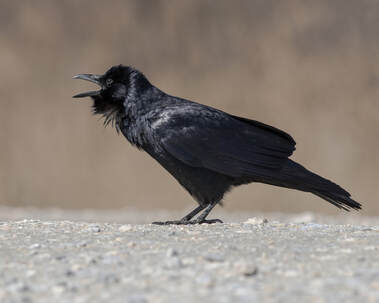 Fish Crow, by Alejandra-Lewandowski, Audubon Photography Awards. Fish Crow, by Alejandra-Lewandowski, Audubon Photography Awards. By Steve Phenicie Even non-birders know about American Crows—the “caw-caw” guys. But Fish Crows—the “uh-uh” guys? Not so much. Fish Crows are a bit smaller than American Crows (about 15.5 inches vs. 17-21 inches) but are so similar that usually the only way to distinguish between the two is their call. Unlike many species, the range of the all-black Fish Crows seems to be expanding and their numbers increasing. Range maps vary, but generally the bird can be found from New England down the Atlantic Seaboard and the Gulf of Mexico up along the Mississippi River. Adam Betuel, Georgia Audubon’s conservation director, says, “Fish Crows are definitely expanding their range northward (well beyond Georgia) and are common in the Atlanta area during most of the year. They definitely could be undercounted as most birds that do not vocalize are left as just ‘crow species’ or are not reported.” Decatur birder Mary Kimberly says, “It’s my experience that they are much more abundant in recent years.” Anne McCallum of Clayton County says, “We see lots of them at the Panola Mountain Banding Station,” which is near Stockbridge. Jay Davis, who isn’t willing to venture whether he has noticed an overall increase, says he sees more Fish Crows than American Crows now that he lives near the Chattahoochee River. He adds that late in the summer of 2020 there were hundreds of Fish Crows gathered for several weeks at the Johnson Ferry South unit of the Chattahoochee River National Recreation Area. Fish Crows are more likely to be found near water than American Crows, and their plumage is smoother and silkier. They like tidewater, river valleys, swamps, woodland and farmland. Along the coast they forage on beaches, marshes, and estuaries. Inland they usually follow the large rivers, although they may feed in woods or fields miles away. Just about anything is on the menu, including carrion, crabs, shrimp, crayfish, insects, berries, seeds, nuts, bird eggs, turtle eggs, and garbage. When it comes time to nest, often a few pairs form a loose colony. They put their nests near the tops of evergreens, deciduous trees, palms, and mangroves depending on what’s available. They may nest in heron colonies and raid the herons’ nests. The nest is a bulky platform of sticks and strips of bark, lined with softer materials such as grass, rootlets, hair, feathers, paper, pine needles, and even manure. A clutch typically consists of four or five eggs, which are dull blue-green to gray-green, blotched with brown and gray. Incubation is by the female, possibly assisted by the male, for about 16 to 18 days. Both parents probably feed the nestlings. The age when young leave the nest is not well known but is probably three to four weeks. Partners in Flight estimates a global breeding population of 450,000, entirely in the United States. Although crows are protected by the Migratory Bird Treaty Act, states retain the right to allow hunting of them because they are regarded as pest species.
4 Comments
11/13/2021 03:50:53 pm
Very interesting information. Thank you Steve!
Reply
Peggy
3/13/2022 05:53:01 pm
have crows, common or fish, been seen near Chattahoochee R and Proctor Creek?
Reply
Steve
3/13/2023 10:32:44 am
I have fish crows in Conyers. I recently got the Merlin app and ID’d them by their call. It’s really interesting.
Reply
3/19/2023 09:41:34 pm
Embora os Corvos Americanos sejam bem conhecidos, os Fish Crows parecem ser um pouco mais reclusos. No entanto, eles têm uma história fascinante para contar. Os Fish Crows vivem em toda a América do Norte, desde o Atlântico até o Pacífico. Eles tendem a ter habitats mais marinhos, como baías, rios, lagos e estuários, e se alimentam principalmente de peixes, caranguejos, mexilhões, ostras e outras criaturas do mar. Se você estiver perto de qualquer um destes habitats, é possível ouvir seu canto característico, um "uh-uh" que é diferente do canto de seus primos Corvos Americanos. É uma trilha sonora única que vale a pena procurar.
Reply
Your comment will be posted after it is approved.
Leave a Reply. |
AuthorBirds Georgia is building places where birds and people thrive. Archives
April 2024
Categories |

 RSS Feed
RSS Feed

